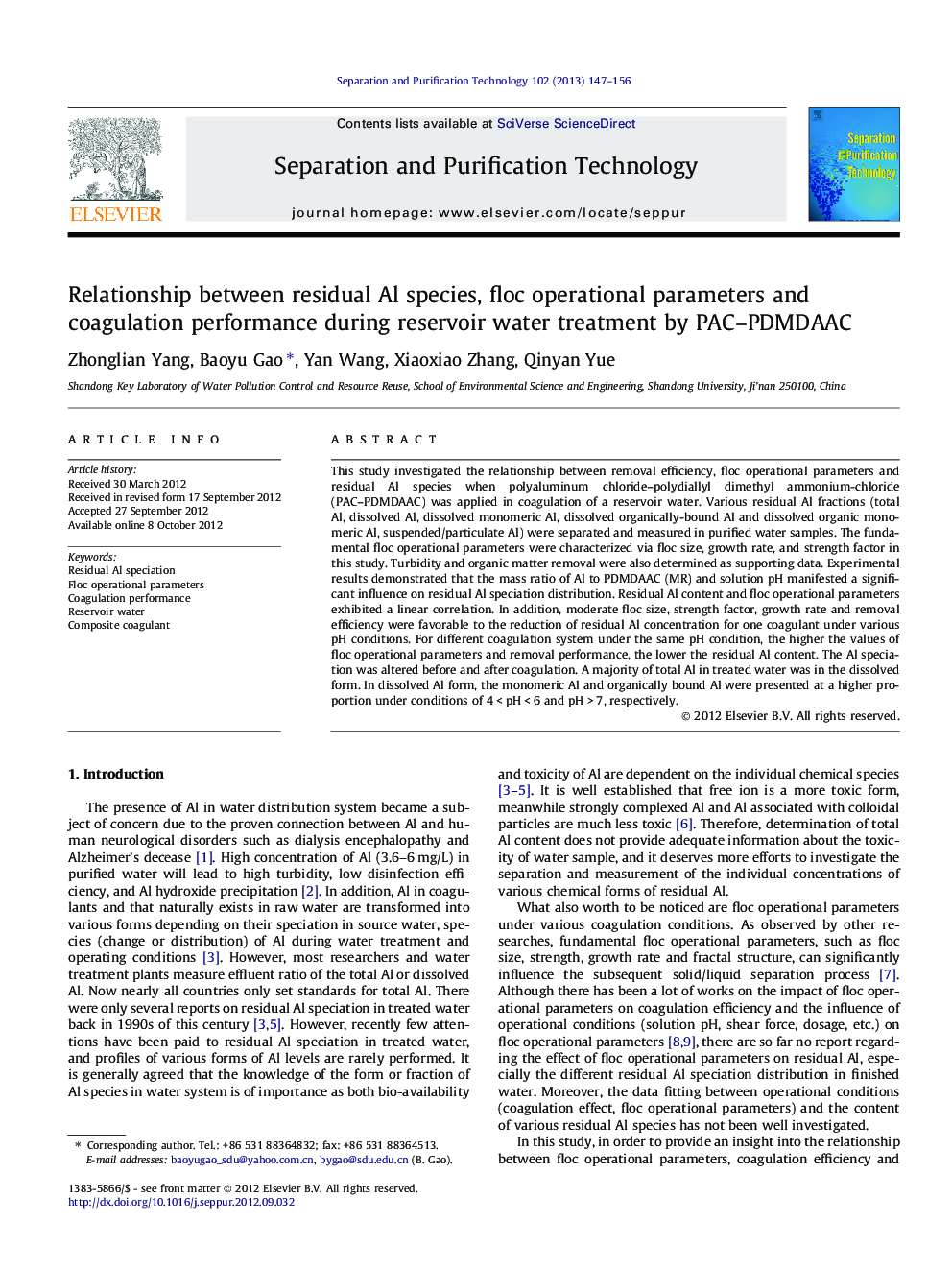| Article ID | Journal | Published Year | Pages | File Type |
|---|---|---|---|---|
| 641901 | Separation and Purification Technology | 2013 | 10 Pages |
This study investigated the relationship between removal efficiency, floc operational parameters and residual Al species when polyaluminum chloride–polydiallyl dimethyl ammonium-chloride (PAC–PDMDAAC) was applied in coagulation of a reservoir water. Various residual Al fractions (total Al, dissolved Al, dissolved monomeric Al, dissolved organically-bound Al and dissolved organic monomeric Al, suspended/particulate Al) were separated and measured in purified water samples. The fundamental floc operational parameters were characterized via floc size, growth rate, and strength factor in this study. Turbidity and organic matter removal were also determined as supporting data. Experimental results demonstrated that the mass ratio of Al to PDMDAAC (MR) and solution pH manifested a significant influence on residual Al speciation distribution. Residual Al content and floc operational parameters exhibited a linear correlation. In addition, moderate floc size, strength factor, growth rate and removal efficiency were favorable to the reduction of residual Al concentration for one coagulant under various pH conditions. For different coagulation system under the same pH condition, the higher the values of floc operational parameters and removal performance, the lower the residual Al content. The Al speciation was altered before and after coagulation. A majority of total Al in treated water was in the dissolved form. In dissolved Al form, the monomeric Al and organically bound Al were presented at a higher proportion under conditions of 4 < pH < 6 and pH > 7, respectively.
